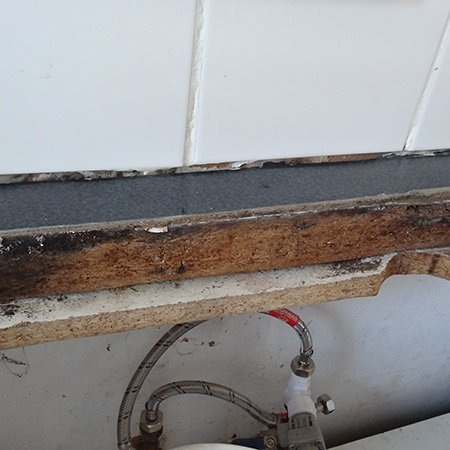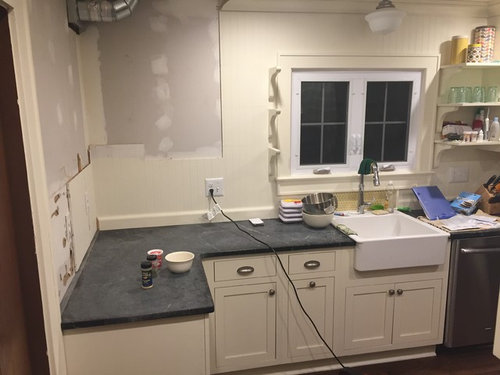The content in the next paragraphs about Causes of Water Damage in Kitchen is pretty much motivating. Give it a try and draw your own personal final thoughts.

The cooking area is the area where a lot of water task goes on. You can hardly do anything without utilizing water in the kitchen area, from food preparation, cleansing, and doing the dishes.
Thus, inspecting your kitchen area once in a while is a requirement. This is due to the fact that it has a greater opportunity of obtaining water damage due to the appliances you use there.
When faulty, these appliances that control water could make your kitchen messy and affect the structure of your structure in the future.
Let's check out some causes of the water damage in the cooking area and also what you need to look out for.
Some Root Causes Of Water Problems in the Kitchen area
These are a few reasons for water damage in the kitchen.
Faulty Kitchen Sink
The cooking area sink is a crucial as well as many used part of the kitchen. It is prone to water damage; problems such as obstructed pipes, dripping pipelines, and faulty taps.
These damages can be annoying, specifically when one is hectic in the kitchen. It does not just take place without providing an idea or an indication. So here are some indicators to know when your sink is not all right
These are the significant damages that can take place to your kitchen sink. Nevertheless, one means to stop this damages is by ensuring that food particles do not enter the pipelines. You are additionally checking the faucets as well as pipelines and making sure that it is effectively fixed as well as in good condition.
Dripping Dish washer
Dishwashers make life in the kitchen much easier. Nonetheless, it is an optional kitchen home appliance as well as, when readily available, can be a resource of water damage. In addition, like other devices, it will certainly create mistakes over time, even with maintenance.
One of the mistakes is dripping via the door or under the dishwasher. These faults develop due to age, cracks, wrong use, loosened web links to pipelines, and so on.
Mistakes as a result of age originated from constant use. Because of this, the door leaks because of opening and shutting.
Mistakes from the incorrect use might trigger water damage by presenting fractures to it. For this reason, it is recommended to comply with the hands-on guide of the dishwashing machine to avoid this specific damage.
The leaks under the dishwasher can come from cracks in the gasket, tube, and also wrong or loose connection to pipes or drains pipes.
This type of leak frequently goes unnoticed and can be there for a long period of time. Nonetheless, because of the time frame, it could trigger and harm the flooring mold development.
A lot more so, the longer the water remains, you will observe the warping of the flooring where the dish washer is. This is a great sign to keep an eye out for when examining if your dishwashing machine leaks. Finding and also fixing this on time stops serious water damage to your floor covering.
Faulty Drain Pipes
Drain pipes Pipes are essential parts of our homes, especially in our restrooms and kitchen areas. They obtain faulty by obtaining blocked, split, and ruptured. Or worse, they can be mistakenly or loosely attached; whichever the case might be, it can be a severe issue.
Faulty drainpipe pipes can trigger water damage and also, consequently, create mold development and injure the look of your wall. It can additionally make the afflicted location look messy.
As a result, it is advisable constantly to inspect to make certain that all the pipes are in good condition and also get a sound pipes system to keep and repair any type of concerns.
Profits
Keeping an eye out for damages in your kitchen area can be entrusting but required. It makes your job there less complicated and safer.
The reasons detailed above are just a few elements to think about, particularly if your kitchen area has a whole lot of devices.
Get a professional plumbing service to come around as well as inspect for any type of damages and also obtain them dealt with.
It makes your kitchen location damp and also unpleasant, especially when dripping from the pipes. And if it is dripping from the faucet, it leads to water wastage.
It is an optional kitchen appliance and, when available, can be a resource of water damage. A lot more so, the longer the water stays, you will notice the warping of the flooring where the dish washer is. Identifying as well as fixing this on time prevents significant water damage to your floor covering.
WAYS TO PROTECT YOUR KITCHEN FROM WATER DAMAGE
The kitchen is one of the most significant rooms in your house, as it is a multipurpose room wherein you can do your cooking and cleaning. Nowadays, homeowners tend to ignore the problems under their sink or appliances because of their busy schedules. However, most household floods occur due to plumbing and appliance failure. One of the most common scenarios that cause water damage to your kitchen is when the dishwasher malfunctions and floods gallons of water.
Water damage in your kitchen can cause several problems, including cosmetic damage, mold growth, and even an unpleasant smell. Often, if you fail to neglect the problem, there are always consequences. This article will help you protect your kitchen from water damage.
Common Causes of Water damage in your kitchen
Pipe problems are the most common source of water leaks under your sink. If homeowners ignore this issue, it will burst and flood the kitchen. Dishwasher leaks can be a source of water damage in your kitchen. An old, broken, and defective dishwasher can cause leaks, damage to your floor, and even mold growth. Refrigerator leaks can cause water damage in your kitchen, as sometimes melted ice from defrosting can cause leaks. Furthermore, if your refrigerator has internal problems, it is very likely to cause water damage. Back-splash and sink caulking can cause discoloration and water damage to your countertop tiles. Ways to Protect Your Kitchen From Water Damage
Regular maintenance
The most important thing you can do to protect your kitchen from water damage is to inspect the sinks, drains, and pipes, as well as the kitchen appliances, regularly. As with the sink, check for missing or deteriorated caulk. Remove the old caulk and clean the area thoroughly and re-seal it with fresh silicone. Furthermore, sweep the drain regularly, empty the filter and dispose of the debris in the garbage, and inspect the supply lines and valve for cracks.
Check your appliances
Check the user’s manual for instruction and proper use of every water-related appliance installed in your kitchen. For the dishwasher, check this procedure to prevent the dishwasher from flooding your kitchen. Check the appliances that need water, such as the coffee maker, ice maker, and water cooler, as they can become the cause of water damage in your kitchen. You may call a professional to check and repair damaged appliances and professional restoration for water damage clean-up.
Garbage clean-up
Fats, oil, and grease are common in the kitchen. Pouring them down the drain can cause clogs and sewage backup, which may result in significant kitchen water damage. If your kitchen sink is clogged, use a solution of hot water, baking soda, and vinegar to unclog the fats and oils in the pipes. Also, make sure to throw out the debris in the trash and clean the sink properly using paper towels for greases and oil and soap or bleach solution for the sink itself.
Shut off your water line
Make sure to shut off your main water line, especially if you're away and having some flood issue. As mentioned, dishwasher leaks are one of the most common culprits of water damage in the kitchen. So, make sure to only use the dishwasher if someone is at home and available to attend in case a problem arises.
Furthermore, it is also important that every member of your household knows where the shut-off valves are located. So in case of an emergency, they can mitigate the damage by turning off the water source.
Install leak detectors
One of the best ways to catch water damage before it could even cause serious damage to your home or business is by installing a water or leak detector. A leak detector monitors the flow of water through a pipeline, can detect moisture in the air for molds, and tracks the water temperature. Also, it can shut off your water line in case of an emergency. Install leak detectors under the kitchen sink, near the dishwasher and refrigerator.
https://superiorrestore.com/7-ways-to-protect-your-kitchen-from-water-damage/

We hope you enjoyed reading our section on Most Common Causes of Residential Water Damage . Thank you for taking a few minutes to read through our posting. In case you enjoyed our blog post plz make sure you remember to pass it around. I praise you for your time. Come back soon.
Click